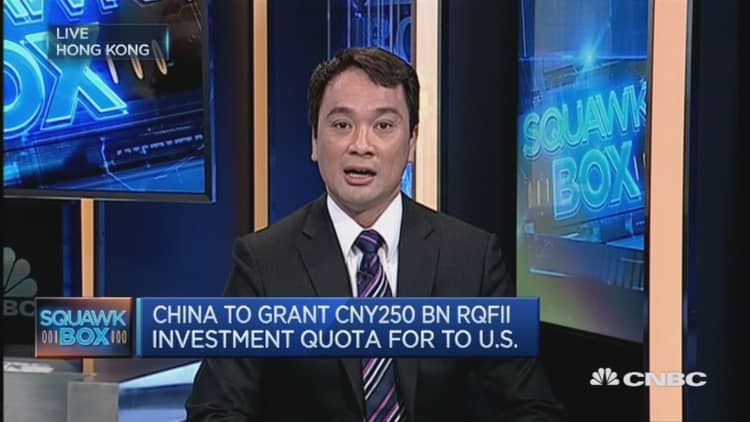May's soggy Chinese trade data offered the latest sign that the world's second-largest economy was still a long way off from full health.
Exports in dollar-denominated terms tanked 4.1 percent on-year, more than double April's 1.8 percent fall and slightly worse than estimates for a 3.6 percent decline, Reuters said on Wednesday.
Imports meanwhile edged down 0.4 percent on-year, narrower than April's 10.9 percent tumble and the 6 percent slide anticipated.
That left Beijing with a trade surplus of $49.98 billion, wider than April's $45.56 billion reading but missing Reuters' $58 billion forecast.
For the first five months of the year, annual exports were 7.3 percent lower while imports were down 10.3 percent.
Market reaction was relatively muted, with mainland equities modestly lower and the Australian dollar flat around $0.7450.
Softening global demand was to blame for weak exports instead of domestic factors, Julian Evans-Pritchard, China economist at Capital Economics said in a note, pointing to poor demand in many of China's key trading partners, including the U.S., the EU and Japan.
"China's export growth is likely to remain subdued going forward. While we don't anticipate much more of a slowdown in global growth given that the worst is probably over for many emerging markets, we don't foresee a significant pick-up either."
He attributed the better-than-expected imports figure to the ongoing recovery in global commodity prices that boosted import values.
"Import growth is likely to edge up further for the remainder of this year as the fall in commodity prices during the second half of 2015 enters the base for comparison and the continued feed-through from earlier policy easing helps to prop up domestic demand."

The FX factor
In yuan terms, May trade data painted a different picture, with exports up 1.2 percent on-year and imports 5.1 percent higher.
The divergence with dollar figures reflected the interruption of the renminbi's long-term appreciation trend against the dollar, said Thierry Apoteker, executive chairman and chief economist at TAC Economics.
"China has been losing worldwide market share on manufactured products for a while... if worldwide trade in dollar terms is zero, China is at minus 4. This is no surprise because most competitors have had their currency depreciating by 20-25 percent since 2013, but the yuan has remained broadly stable, with depreciation only beginning since July 2015."
Indeed, simmering uncertainty about the direction of the renminbi has been the source of shaky investor sentiment.
Critics have long accused Beijing of manipulating its currency lower in order to benefit its exports, but the central bank has repeatedly denied those rumors as it attempts to let the currency become more market-oriented. On Wednesday, a People's Bank of China (PBOC) economist said the bank will allow the currency "some degrees of appreciation or depreciation" against a basket of currencies, Reuters reported.
But some banks such as OCBC are still anticipating a weaker currency on the back of a looming U.S. interest rate hike, not domestic policymaking. Goldman Sachs recently shifted to an "outright negative" view on the yuan, blaming the change in sentiment on a "weak link" in the mainland's currency management strategy.

Mixed momentum
Overall, data points for May so far have provided little indication that the economy was on the mend.
Three separate surveys last week showed activity in the manufacturing and services sectors was relatively unchanged.
Foreign exchange reserves declined by $27.9 billion to $3.1 trillion, versus a gain of $7.1 billion and $10 billion in April and March, respectively, data showed on Tuesday.
China's capital outflow remains sizeable and could be in the range of around $35-45 billion, Citi economists said in a note.
Meanwhile, the World Bank kept China's 2016 growth forecast at 6.7 percent, unchanged from its previous estimates, in a report on Wednesday. But the organization did warn growth could dip to to 6.3 percent by 2018 as Beijing progressed toward a more consumer and services-driven economy.
Following Wednesday's data, the PBOC announced it would maintain its 2016 gross domestic product (GDP) forecast at 6.8 percent, after the economy expanded 6.9 percent in 2015, a 25-year low.

